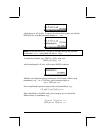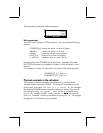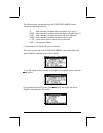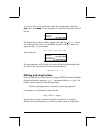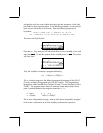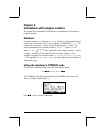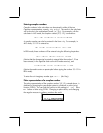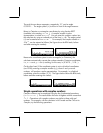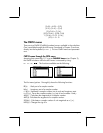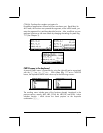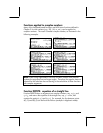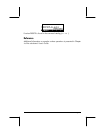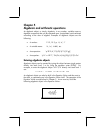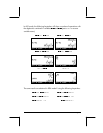
Page 4-3
The result shown above represents a magnitude, 3.7, and an angle
0.33029…. The angle symbol (∠) is shown in front of the angle measure.
Return to Cartesian or rectangular coordinates by using function RECT
(available in the catalog,
). A complex number in polar
representation is written as z = r⋅e
i
θ
. You can enter this complex number into
the calculator by using an ordered pair of the form (r, ∠θ). The angle symbol
(∠) can be entered as
. For example, the complex number z =
5.2e
1.5i
, can be entered as follows (the figures show the RPN stack, before
and after entering the number):
Because the coordinate system is set to rectangular (or Cartesian), the
calculator automatically converts the number entered to Cartesian coordinates,
i.e., x = r cos θ, y = r sin θ, resulting, for this case, in (0.3678…, 5.18…).
On the other hand, if the coordinate system is set to cylindrical coordinates
(use CYLIN), entering a complex number (x,y), where x and y are real
numbers, will produce a polar representation. For example, in cylindrical
coordinates, enter the number (3.,2.). The figure below shows the RPN stack,
before and after entering this number:
Simple operations with complex numbers
Complex numbers can be combined using the four fundamental operations
(
). The results follow the rules of algebra with the caveat that
i
2
= -1. Operations with complex numbers are similar to those with real
numbers. For example, with the calculator in ALG mode and the CAS set to
Complex, try the following operations:



